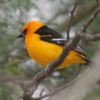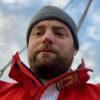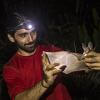Acoustic sensors enable efficient and non-invasive monitoring of a wide range of species, including many that are difficult to monitor in other ways. Although they were initially limited in application scope largely due to cost and hardware constraints, the development of low-cost, open-source models like the Audiomoth in recent years has increased access immensely and opened up new avenues of research. For example, some teams are using them to identify illicit human activities through the detection of associated sounds, like gunshots, vehicles, or chainsaws (e.g. OpenEars).
With this relatively novel dimension of wildlife monitoring rapidly advancing in both marine and terrestrial systems, it is crucial that we identify and share information about the utility and constraints of these sensors to inform efforts. A recent study identified advancements in hardware and machine learning applications, as well as early development of acoustic biodiversity indicators, as factors facilitating progress in the field. In terms of limitations, the authors highlight insufficient reference sound libraries, a lack of open-source audio processing tools, and a need for standardization of survey and analysis protocols. They also stress the importance of collaboration in moving forward, which is precisely what this group will aim to facilitate.
If you're new to acoustic monitoring and want to get up to speed on the basics, check out these beginner's resources and conversations from across the WILDLABS platform:
Three Resources for Beginners:
- Listening to Nature: The Emerging Field of Bioacoustics, Adam Welz
- Ecoacoustics and Biodiversity Monitoring, RSEC Journal
- Monitoring Ecosystems through Sound: The Present and Future of Passive Acoustics, Ella Browning and Rory Gibb
Three Forum Threads for Beginners:
- AudioMoth user guide | Tessa Rhinehart
- Audiomoth and Natterjack Monitoring (UK) | Stuart Newson
- Help with analysing bat recordings from Audiomoth | Carlos Abrahams
Three Tutorials for Beginners:
- "How do I perform automated recordings of bird assemblages?" | Carlos Abrahams, Tech Tutors
- "How do I scale up acoustic surveys with Audiomoths and automated processing?" | Tessa Rhinehart, Tech Tutors
- Acoustic Monitoring | David Watson, Ruby Lee, Andy Hill, and Dimitri Ponirakis, Virtual Meetups
Want to know more about acoustic monitoring and learn from experts in the WILDLABS community? Jump into the discussion in our Acoustic Monitoring group!
Header image: Carly Batist
Behavioural ecologist @CNRS in France - working mostly on ungulates in Europe and Africa

- 0 Resources
- 4 Discussions
- 4 Groups
- @nlubcker
- | Dr
Results-Driven R&D Project Manager | Data scientist | I'm a versatile professional with 10 years of global experience in conservation and research.
- 0 Resources
- 1 Discussions
- 7 Groups
- @mariammatta
- | she/her
- 0 Resources
- 0 Discussions
- 7 Groups
- 0 Resources
- 0 Discussions
- 1 Groups
User experience designer focusing on marine mammal conservation through UX-driven exploration of bioacoustics.
- 0 Resources
- 2 Discussions
- 2 Groups
- @ecosystem2
- | he/him
- 0 Resources
- 0 Discussions
- 4 Groups
- 0 Resources
- 3 Discussions
- 1 Groups
The Nature Conservancy
- 0 Resources
- 1 Discussions
- 3 Groups
- @LianaN
- | She/Her
- 0 Resources
- 0 Discussions
- 2 Groups
- @shana
- | she/her
I am a Senior Research Scientist in the Department of Human Centered Design and Engineering at the University of Washington. I am a researcher with the eDNA Collaborative and Co-Director of the Pacific Marine Energy Center.
- 1 Resources
- 1 Discussions
- 7 Groups
- 0 Resources
- 0 Discussions
- 11 Groups
- @robertlachlan
- | He/Him
Research in animal communication developing SongBeam song recorder devices
- 0 Resources
- 0 Discussions
- 1 Groups
In a recent publication we tested Underwater Passive Acoustic Monitoring (UPAM) as a feasible non-invasive technique to study the calling behavior of therathened aquatic Andean frogs under natural conditions in the...
6 April 2024
What can soundscapes tell us about ecosystem functioning and health? We are looking to hire a postdoctoral researcher in ecoacoustics for Nature Recovery at Oxford
2 April 2024
Hussey Labs seeks a senior post-doctoral researcher/senior research associate for movement ecology of Greenland halibut in the context of fisheries management across Baffin Bay-Davis Strait, Eastern Canadian Arctic.
13 March 2024
Catch up on the conservation tech discussions and events that happened during World Wildlife Day 2024!
7 March 2024
Do you know anyone interested in this position? Let them know by sharing widely.
27 February 2024
The Ecological Acoustics and Behavior Lab at the University of New Hampshire seeks a PhD student to join our lab to investigate how forest habitat affects moose occupancy and soundscape in northern New Hampshire
13 February 2024
The primary focus of the research is to explore how red deer movements, space use, habitat selection and foraging behaviour change during the wolf recolonization process.
10 February 2024
Applications open for a PhD position in plant vibroacoustics at the University of Southampton
8 February 2024
We demonstrate the power of using passive acoustic monitoring & machine learning to survey species, using ruffed lemurs in southeastern Madagascar as an example.
23 January 2024
Come join our team! We're looking for a Program Officer to join the WILDLABS Community, hosted by WCS in Argentina. This role will support our research program, with the chosen candidate leading our horizon scanning...
22 January 2024
Careers
We're hiring ecologists for immediate start / remote working / short contract
19 January 2024
Two years in Cape Town, South Africa. Yearly visits to Rwanda. If you love to code, and all things Python/deep learning/tech stuff/ then you'll have an awesome time!
16 January 2024
April 2024
June 2024
July 2024
event
November 2023
event
| Description | Activity | Replies | Groups | Updated |
|---|---|---|---|---|
| 'Most importantly, we have to make it play a MIDI version of the DoctorWho theme song when you arm the device. That has to be the #1 feature if you ask me!' Seconded! |
+9
|
Acoustics, Biologging, Emerging Tech, Open Source Solutions, Sensors | 1 hour 51 minutes ago | |
| Hi Matthew,Thanks for your advice, this is really helpful!I'm planning to use it in a seagrass meadow survey for a series of ~20 drops/sites to around 30 m, recording for around... |
|
Acoustics, AI for Conservation, Data management and processing tools, Emerging Tech, Sustainable Fishing Challenges | 1 day 5 hours ago | |
| Super great to see that there will be more work on insect ecoacoustics! So prevalent in practically every soundscape, but so often over-looked. Can't wait to follow this project... |
|
Acoustics, AI for Conservation | 2 days 20 hours ago | |
| Awesome project!! |
|
Acoustics | 4 days 20 hours ago | |
| Thank you Carly! We have over 60 bats recorded in Zimbabwe |
|
Citizen Science, Acoustics, Conservation Tech Training and Education, Human-Wildlife Conflict | 1 week 1 day ago | |
| That is an interesting concept, and it would be great if something out there worked. In the meantime, I will try not to drive at dusk 🦘At one point, I knew the "sonic" animal... |
|
Acoustics, Citizen Science, Community Base, Human-Wildlife Conflict | 1 week 1 day ago | |
| This is so cool @Mauricio_Akmentins - congrats and look forward to seeing your project evolve! |
|
Acoustics, Biologging, Climate Change, Conservation Tech Training and Education, Data management and processing tools, Emerging Tech, Open Source Solutions, Protected Area Management Tools, Sensors, Software and Mobile Apps | 1 week 1 day ago | |
| Congrats @MattyD797 and team!!! We do a lot of work in the underwater bioacoustic realm and your tool certainly seems like it would be a great instrumental addition to the... |
|
Acoustics, Build Your Own Data Logger Community, Marine Conservation, Protected Area Management Tools, Sustainable Fishing Challenges | 1 week 1 day ago | |
| We've deployed passive acoustic monitors in various urban environments without any issues of theft, even in locations where camera traps and other technology has been historically... |
+5
|
Acoustics | 1 week 3 days ago | |
| We could always use more contributors in open source projects. In most open source companies Red Hat, Anaconda, Red Hat and Mozilla, people often ended up getting hired largely... |
|
Acoustics, AI for Conservation, Conservation Tech Training and Education, Early Career, Marine Conservation | 3 weeks 1 day ago | |
| Hello everyone, I'm interested in gathering insights on how the behavior of different species impacts the development and efficacy of... |
|
Biologging, Acoustics, Camera Traps, eDNA & Genomics, Emerging Tech, Marine Conservation | 3 weeks 2 days ago | |
| Thank you Carly, I will definitely take a look. |
|
Acoustics, Biologging, Climate Change, Conservation Tech Training and Education, Data management and processing tools, Remote Sensing & GIS, Software and Mobile Apps | 3 weeks 5 days ago |
New Paper - The sound of the illegal: Applying bioacoustics for long-term monitoring of illegal cattle in protected areas
12 January 2023 5:20pm
This study uses passive acoustic monitoring to record the patterns of illegal cattle occurrence within protected areas in the Brazilian Pantanal.
WEBINAR: Earth, Wind & Fire: Amphibian Response to Wildfires, Windfarms, & More
11 January 2023 5:59pm
Conservation Technology Intern (Vietnam)
11 January 2023 5:00pm
Education Paper on Computer Vision for Ecology
9 January 2023 5:30am
Job: Conservation Technology Specialist (PT)
6 January 2023 12:49am
Job: maker / workshop technician
5 January 2023 10:53am
San Diego Zoo needs Summer Undergraduates!!
19 December 2022 1:58pm
Upcoming PAM & R Ocean Science Courses
16 December 2022 3:27pm
PhD - Sensory ecology of vespine wasps
8 December 2022 12:47pm
New paper - First population estimates of two Critically Endangered frogs from an isolated forest plateau in Madagascar
28 November 2022 4:19pm
Acoustic survey data is used to estimate the diversity of critically endangered amphibians in the fragmented forests of Madagascar.
Unifying acoustic metadata
2 November 2022 10:21am
4 November 2022 3:47pm
Hi Jamie, this is super exciting! I had not realized that PAMGuard integration was going to be part of the plan for Tethys - so thrilling!
One quick question - when processing large datasets, often I end up with a series of binary/database files (e.g., separate runs for separate frequency bands). Does Tethys accommodate the multiple file scenario?
Would love to give it a whirl when appropriate.
7 November 2022 12:32pm
Yeah, it's an exciting project. Also will be a great excuse to improve PAMGuard documentation - something sorely needed. Python libraries also on the way as part of this.
As for Tethys, yes it will accommodate the multiple configuration file scenario - ideally the end game will be that any configuration you use in PAMGuard will be directly exportable to a Tethys database. If you use multiple configurations, then each is a separate Tethys database, however, when these are exported they can be amalgamated into one because the Tethys is clever enough to know these are the same data processed in different ways.
"Would love to give it a whirl when appropriate. " - might be a while but noted! :-)
WILDLABS Digest: 4 November 2022
4 November 2022 3:42pm
A new issue of our community digest just went out! Check it out to discover a big platform update, and a summary of all the latest content from across WILDLABS in one easy to scan place!
Your HydroMoth experience!
29 July 2022 1:38pm
4 August 2022 9:45am
Thanks for the little push on twitter ;-)
I willl be using the #hydromoth in the Austrian Danube freshwater ecosystem.
The Donau-Auen National Park preserves the last great floodplain landscape in Central Europe, between the cities of Vienna and Bratislava. I´m working with colleagues combining sounds and eDNA on fish and European pond turtles. I´m also testing the Pond Acoustic Sampling Scheme by @CarlosAbrahams et al.
https://www.ncbi.nlm.nih.gov/pmc/articles/PMC8216941/
Now what about your species of interest?
Greetings,
Robin
29 October 2022 9:21am
Cleaning Hydromoth cases
After some time underwater (freshwater) the Hydromoth cases start showing
quite some biofouling. How do you clean your cases? I tried my ultrasonic cleaner and it worked quite well:

30 October 2022 8:33am
Yes, that looks effective!
Data mgmt for Passive Acoustic Monitoring best practices?
14 September 2022 8:35pm
15 September 2022 4:20pm
Hi Alex--
The first thing I'd suggest you think through is how much data you have vs how much data you are currently working on. Because if you have data from previous years that you want to ensure you're storing securely and reliably but don't need immediate access to in order to run analysis on, that opens up some options. You can compress data using lossless algorithms like FLAC, where the compression ratio varies but 50% is a pretty good margin, and then convert back to WAV if necessary for reanalysis. Compressing using MP3, OGG, AIFF, or other compression algorithms is an option that saves even more storage space but you will lose information in ways you wouldn't with FLAC--it depends on your specific needs.
I'd also recommend setting up a RAID array (RAID = "Redundant Array of Inexpensive Disks"). This offers some additional security in event of a drive failure. A lot of folks who do video editing, probably the most similar use case to people working with acoustic data who also lack the institutional support of a large company or university IT department use a local NAS enclosure like https://www.qnap.com/en-us/product/ts-433 that are designed for just this purpose. Some higher initial startup costs than just buying individual USB hard drives but that does come with some perks including additional reliability and can be faster to read data depending on the exact drive specs and your local networking setup.
There are also low-cost cloud storage services like Amazon's Glacier. However, getting these set up can be a little bit tricky and they are not particularly responsive (for example, if you upload data to Glacier, it will be very safe, but getting it back if you need to use it again can take a few days depending on the dataset size).
19 September 2022 1:58am
Hello Alex,
My information might not be that helpful to you, still, our organisation have an Enterprise license of AWS cloud and we store all our media files (video, pictures, audio etc.) there. We are also using a media management solution, Piction, thru which we upload the files into the S3 bucket and in the process it also captures the file metadata (some of the metadata values needs to be entered manually). This is useful to search the files if someone wants to view or process the file later. We are soon deciding on the file storage configuration so that old files will move to cheap storage like AWS Glacier, which will take a maximum of a week time to retrieve it.
Jitendra
28 October 2022 4:19pm
Hi Alex,
I'd go much further along the lines that David @dtsavage sets out. Before jumping to implementations, better think through why you want to keep all that data, and for who? From your question, it appears you have at least three purposes:
1- for yourself to do your research
2- for others to re-use.
3- for yourself to have a back-up
For 1) you should do what works best for you.
For 3) use your organization's back-up system or whatever comes close to that
For 2 and 3) As you are indicating yourself : deposit your data at your nation's repository or zenodo.org if your nation doe not have one. It may be some documentation work ( which is what you should do anyways, right? ), but then you can stop worrying about holding on to it. Someone else is doing that for you and they do a much better job - because it is their job. Moreover, you increase the chance that other will actually become aware of all that data that you are sitting on by putting it into a repository. Who is otherwise going to find out and how that you have those disks on your desk? Lastly, depositing your data can also serve as a back-up. If you don't want to share it before you've published about it, there is likely the option of depositing under time-embargo or of depositing while requiring your consent for any re-use.
You ask how many people actually do this? You can find the answers at the repository, but I suggest that what matters most is whether you want to for your own reasons, and whether your funders, or organization's funders require it.
Audiomoth online conference
24 October 2022 4:50pm
New conservation tech articles from Mongabay
20 October 2022 7:45pm
Software to aid acoustic sound files visualization/labelling + Software to syncronize video/acoustic sonograms
23 September 2022 1:01pm
8 October 2022 12:44am
I would also recommend Arbimon. It is well set up to handle Audiomoth recordings. Being cloud based, you will need a good internet connection for sound file upload. I'm just starting to investigate its use for Song Scope recordings. Setting up the call recognisers will be a slow process, but they can be made available to all users once done.
8 October 2022 7:33am
You could try using a video editor like DaVinci for looking at your video and audio together. I don't think DaVinci displays sonograms by default (just waveform) but I think it will open your selected audio in an external editor which would allow you to see the sonograms and make measurements with something like Audacity or Kaleidoscope.
20 October 2022 11:01am
The open-source program Audacity can show the spectrograms and histograms and has quite a lot of other useful features, e.g. playing ultrasound calls slower, so it can be heard by people.
Conservation Technology Intern (Vietnam)
 Meredith S. Palmer
Meredith S. Palmer
19 October 2022 9:22am
Acoustic Monitoring Biologist (Avian)
19 October 2022 12:11am
New paper: Benthic animal-borne sensors & citizen science combine to validate ocean modelling
10 October 2022 4:15pm
"We develop the use of benthic species as animal oceanographers by combining archival (depth, temperature) data from animal-borne tags, passive acoustic telemetry & citizen-science mark-recapture records for the flapper skate in Scotland."
The Smart Biosphere: How Technology can provide regenerative resources at scale
10 October 2022 12:06pm
Open Position at Cornell - Software/Firmware Developer
6 October 2022 5:10pm
Multi-day workshop: Machine Learning Advances for Marine Acoustics & Imagery Data
4 October 2022 5:20pm
Audio Across Domains Workshop 2022
3 October 2022 7:54pm
3 October 2022 11:40pm
11 October 2022 2:05pm
New paper - Rookognise: Acoustic detection & identification of individual rooks in field recordings using multi-task neural networks
3 October 2022 2:35pm
Authors developed system to acoustically identify individual animals (under varying conditions) using combo of multi-scale information integration, multi-channel audio & multi-task learning. Tested on captive group of rooks.
New paper: Battery-free wireless imaging of underwater environments
29 September 2022 3:22pm
'The low-power camera uses power from harvested acoustic energy and communicates colour images wirelessly via acoustic backscatter.' - https://twitter.com/NaturePortfolio/status/1574863768714100738?s=20&t=d…
New paper: Seasonal swarming behavior of Myotis bats revealed by integrated monitoring, involving passive acoustic monitoring with automated analysis, trapping & video monitoring
27 September 2022 3:22pm
Authors 'examined effectiveness of acoustic monitoring compared to capture-based & video monitoring of seasonal swarming behavior among Myotis bats in UK. The 3 approaches have advantages & disadvantages for different tasks, but can be highly complementary methods.'















































3 November 2022 12:34pm
Hi Ellie - OK sure thing - I can set up an article too.